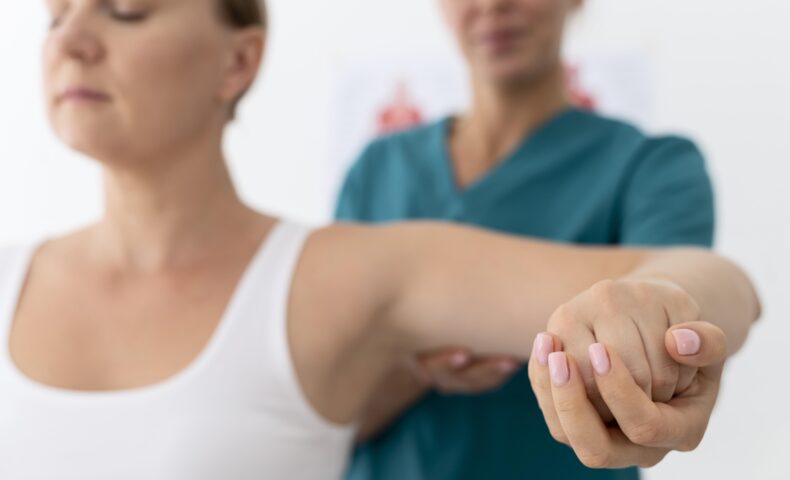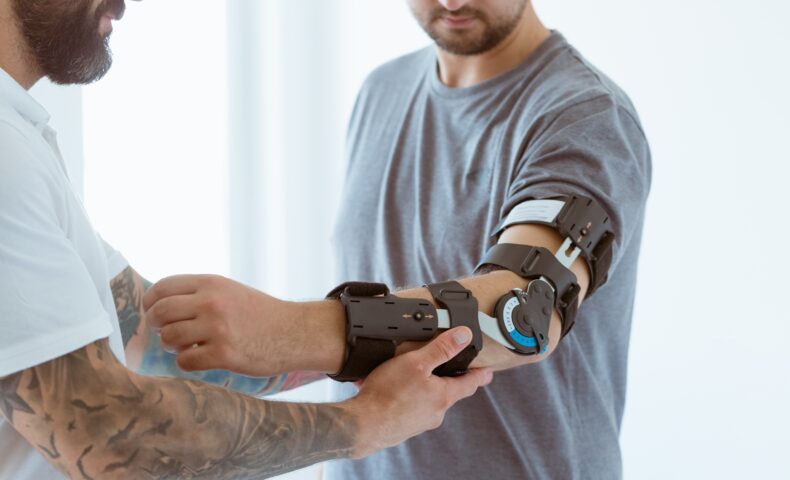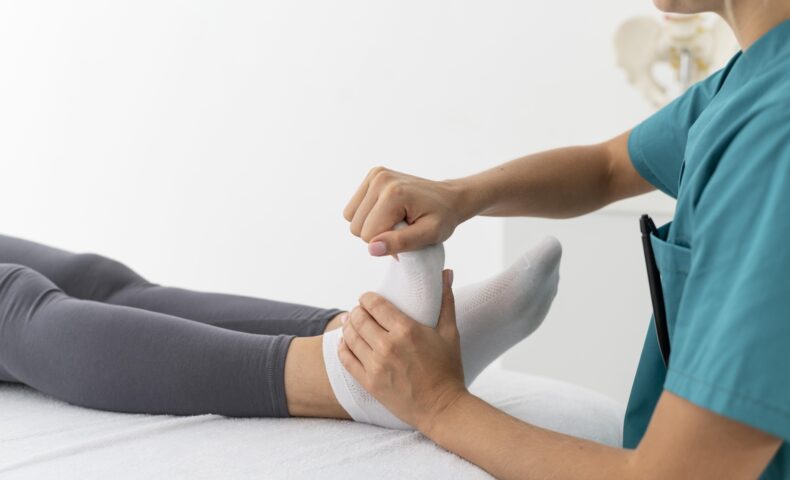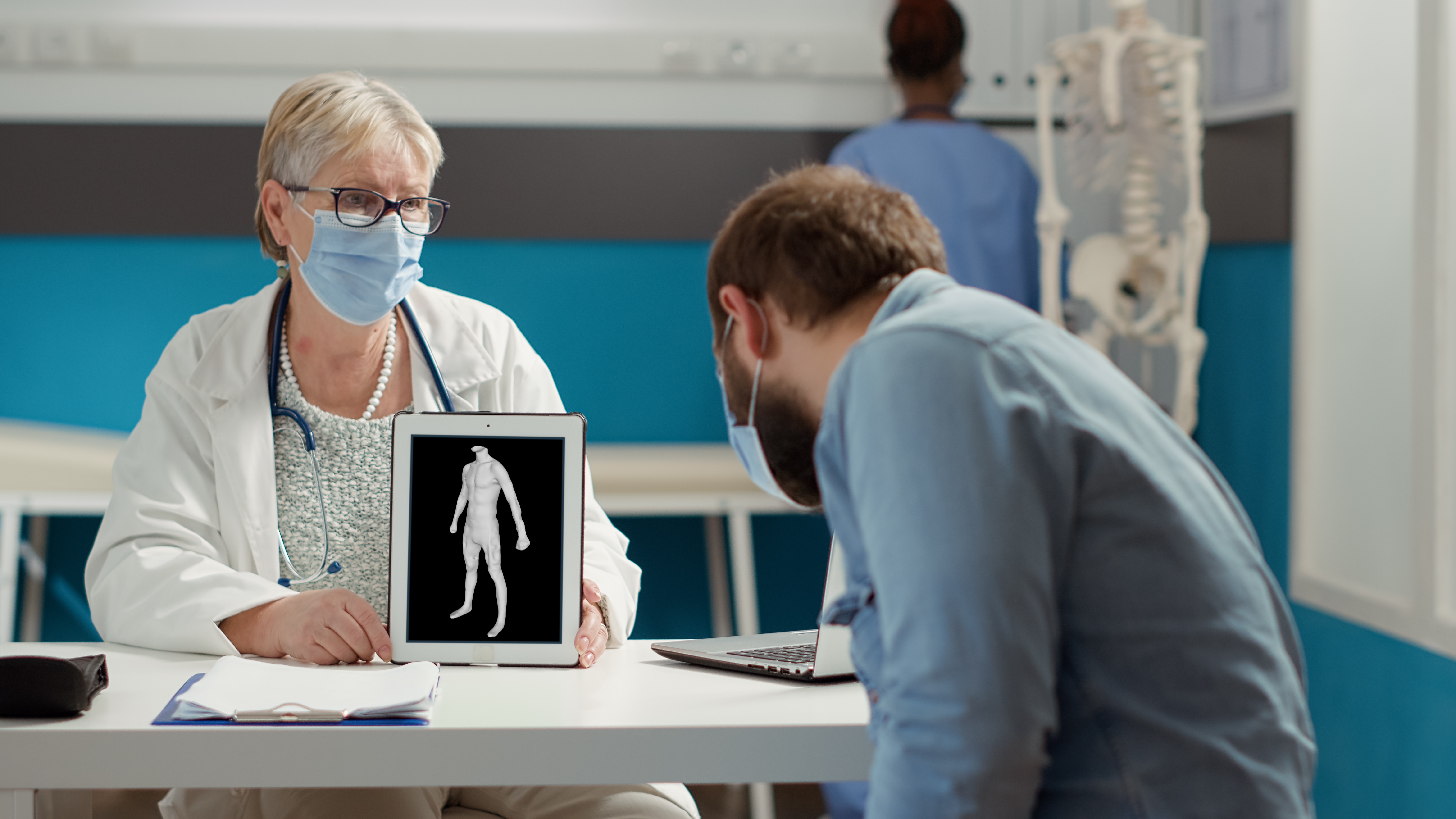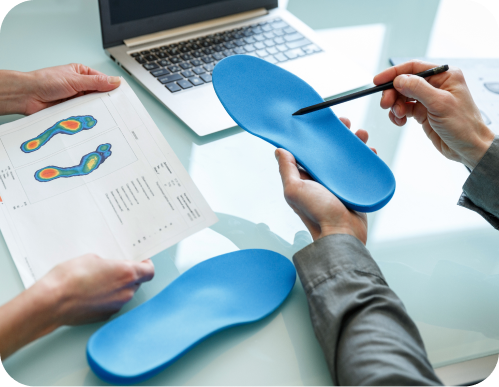Custom soft orthotics play a crucial role in managing various joint and muscle conditions. Thanks to technological advancements, it is now possible to offer tailor-made soft orthotics adapted to each patient’s morphology using mobile 3D scanning. In this article, discover how mobile 3D scanning and digital measurement allow healthcare professionals to personalize their soft orthotics solutions.
What is a soft orthotics?
A soft orthotic is a medical device designed to support, stabilize, or correct a joint while allowing a certain degree of flexibility. Unlike rigid orthotics, which completely immobilize the joint, a soft orthotic allows controlled movement, helping to reduce pain and improve joint function.
Soft orthotics can be used for various body areas, such as:
- Soft wrist orthotic: For carpal tunnel syndrome or mild sprains.
- Soft wrist-thumb orthotic: Ideal for conditions affecting both the wrist and thumb.
- Soft thumb orthotic: Used to treat rhizarthrosis (osteoarthritis at the base of the thumb).
- Soft knee orthotic: Provides support for osteoarthritis or ligament instability.
- Soft ankle orthotic: Offers support for sprains or chronic conditions.
What is the difference between rigid and soft orthotics?
The primary objective of an orthotic is to provide support tailored to the joint or affected area based on the patient’s needs.
First, it helps relieve pain by reducing pressure on the affected joint, improving daily comfort. Then, it helps stabilize the joint by limiting excessive movement, preventing further injuries and protecting the fragile area.
Beyond its supportive function, an orthotic also aids in postural correction by guiding the joint into a more natural alignment, which is essential for preventing the worsening of chronic conditions. Finally, it facilitates rehabilitation by supporting movements while providing targeted support, ensuring a faster and safer recovery after an injury or surgery.
What Are the three types of orthotics?
Orthotics are classified into three main categories based on their rigidity and function:
- Soft Orthotics: These provide cushioning and support while allowing for some movement. They help with shock absorption and are often used for conditions like arthritis or diabetic foot ulcers.
- Rigid Orthotics: Made from firm materials like plastic or carbon fiber, these orthotics are designed to control motion in specific joints. They are commonly prescribed for biomechanical issues that require structural support.
- Semi-Rigid Orthotics: Combining elements of both soft and rigid orthotics, these offer support while still allowing a degree of flexibility. They are often used for athletes or individuals needing both control and comfort.
How to customize a soft orthotics
To offer custom soft orthotics to each patient, mobile 3D scanning is the ideal solution. It enables easy, efficient, and scalable customization in just three steps.
Step 1: Scanning the Affected Body Part
The process begins with a mobile 3D scan of the joint. This technology allows for high-precision capture of the patient’s morphology and digital measurements of body parts such as the hand.
It is possible to scan different areas, such as the wrist for soft wrist and wrist-thumb orthotics or legs for custom joint support orthotics.
Step 2: 3D Modeling and Digital Measurements
Using photogrammetry technology, the captured images generate a precise 3D model with associated 3D measurements. These models are available on the web platform, including wrist, hand, or leg scans. All models are automatically post-processed, scaled, and photorealistic, making them ready for use in CAD (Computer-Aided Design) software.
With a 3D model, you can design or adjust the orthotic according to the patient’s specific needs.
Step 3: Customize your orthotic
The final step is to produce or recommend the standard size of the soft orthotic best suited for the patient. Thanks to mobile 3D scanning and digital 3D measurements, you can now personalize soft orthotics to each patient’s morphology.
The advantages of 3D scanning for custom orthotics
MyFit Solutions has designed its solution specifically for healthcare professionals, addressing the needs and challenges of the medical sector:
- Precision: Mobile 3D scanning technology enables highly accurate anatomical capture, ensuring millimeter-level precision. It faithfully reproduces every anatomical detail, allowing for the creation of custom-made orthotics.
- Ease of Use: No training required. Mobile 3D scanning provides an intuitive, guided experience tailored to healthcare professionals’ needs, whether in a clinic or remotely.
- Efficiency: A simple and cost-effective solution. Mobile 3D scanning integrates seamlessly into clinical practice and telehealth settings. By leveraging iOS and Android 3D scanning apps, we facilitate the rapid and economical deployment of this technology.
Whether for a soft wrist orthotic, soft knee orthotic, or soft rhizarthrosis orthotic, mobile 3D scanning revolutionizes the customization of soft orthotics.


